
- Home
- Travel Packages
- Top Destination
-
Travel Attraction
By Category
Top Attraction
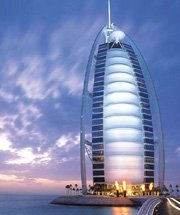
- Travel Agents
- Car Rentals
- Hotels
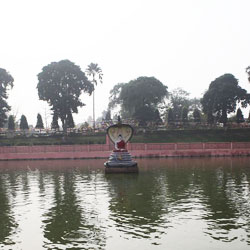
Bodhgaya is a small village town in the Gaya district of Bihar. One of the most sacred pilgrimages of Buddhist religion, Bodhgaya is the place where Gautama Buddha attained enlightenment in 534 BC under the Bodhi Tree. Followers of Buddhist religion come to pay this holy place a visit from all over the world. It was after 250 years of Buddha obtaining enlightenment here, that the prominent follower of Buddhism, King Asoka, visited this place and got the Mahabodhi Temple here. Tourism in Bodhgaya is centred around the Buddhist faith with all other tourist attractions also dedicated to Lord Buddha. The government of Bihar has developed facilities for tourists to conveniently access this place from all corners and revel in the beauty of this holy land. The authorities have also successfully worked to restore the former glory of the Mahabodhi Temple. Bodhgaya is a home to many other Buddhist temples or monasteries from many other nations with a Buddhist tradition (Bhutan, Bangladesh, China, Japan, Myanmar, Sri Lanka, Thailand, and Tibet).
Explore More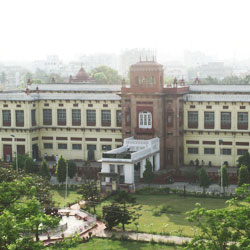
Patna, the capital of Bihar, was known as Pataliputra in the old days. It was in 16th century, during the rule of Sher Shah Suri, that the city was given its new name. It is one of oldest continuously inhabited places of the world. The city was the hub of education in ancient India, famous for receiving foreign travellers such as Fa Hien. It was ruled by the most prominent dynasties namely Magadha, Haryanka, Nanda, Mauryan, Sunga, Gupta and Pala. The city of Patna is on its way to become a metropolitan city with modern infrastructure; it has been placed 5th amongst the fastest growing cities of India. Yet it has not let go off its historical roots and has safely preserved its past. Situated on the banks of Ganges River, the city has very fertile land and is a major contributor to the agricultural sector of India. It is surrounded by important religious centres for Buddhist, Jain and Sikh pilgrims.
Explore More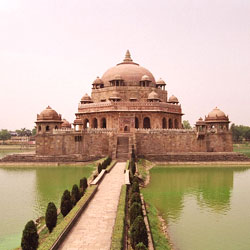
The ancient town of Vaishali in Bihar holds much significance for our history. It derives its name from its ruler of Ramayana era, King Vishal. During the rule of Licchavi Dynasty, around 6th century BCE, Vaishali became the first republic of the world. It also served as their capital. Vaishali is of great significance to both Buddhist and Jain followers. It is the place where Lord Buddha gave his last sermon and also the birthplace of Jain Tirthankar, Lord Mahavira. This city is now an archaeological site. The relics of its remarkable past have been preserved by the Archaeological Survey of India. During the time of Buddha’s visits, Vaishali was a rich and prosperous city. The city hosts some famous festivals and fairs such as the Vaishali Mahotsava and Sonepur fair. The art of making objects in Sikki work is still prominent here. A visit to this historic town will transport one back into time.
Explore More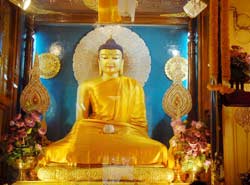
Gaya is a temple town located in Varanasi, Bihar. It is a pilgrimage site for the followers of Hinduism. It has its mentions in the historic Hindu epic like Ramayana. The legends claim that Gaya was visited by Lord Rama along with his younger brother Laxman to do the pind-daan of his deceased father, King Dasharatha. At present, it is visited by hundreds of Hindu pilgrims throughout the year. Perching on the banks of River Ganga, Gaya is elevated 364 feet above the sea level. It covers a gross area of 90 sq. km. and is surrounded by Jehanabad in North, Hazaribagh, and Jharkhand in South, Aurangabad in West and Nawada in East. The climate of Gaya is moderate. It faces humid summers with a median temperature of 37°C and pleasant winters with a median temperature of 18°C. The monsoon season is accompanied by strong winds and heavy downpour. Since Gaya is a temple town, there are numerous pious shrines located there. The well-known temples like Mahabodhi Temple, Vishal Buddha Mandir, Brahmayoni Hill etc. are the popular places of interest. Hundreds of visitors flock to these holy places when they visit Gaya.
Explore More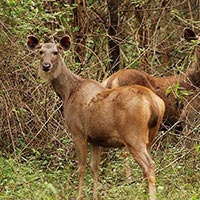
Rajgir is a well-known city located in the Indian state of Bihar. Its name means the royal house. This city is said to be founded 1000 years ago. The soil of Rajgir holds many compelling stories of the past. All the tales are related to the times of Buddha, Mauryan Empire and Mahabharata. They are also depicted through the paintings. Rajgir is flocked by the hundreds of tourists. The city of Rajgir is elevated at 240 feet above the sea level and sprawls over vast acres of land. The hillocks of Vaibhara, Ratna, Saila, Sona, Udaya, Chhatha, and Vipula shroud this city. Such geography of Rajgir defines its climate as a tropical-temperate. During the summers, the median mercury level shoots up to 40°C whereas drops below 17°C during the winter season. The city of Rajgir receives an annual average rainfall of 2500 mm. Rajgir is a residence to the different holy sites. The most-visited places are Saptaparni Buddhist Caves, the pious hill of Vaibhar, Jarasandha Wrestling Arena, Brahmakunda, and Peace Pagoda.
Explore More
Entrenched on the southern banks of River Ganga, Bhagalpur is the 3rd largest city in Bihar. Bhagalpur is associated with the ancient times. As per the Hindu mythology, it is said that Bhagalpur was the place where the Demi-Gods and the Demons churned the ocean to procure elixir, the drink that makes anyone immortal. Bhagalpur is elevated at a height of 171 feet above the sea level and unrolls across an area of 110 sq. km. The climate of Bhagalpur is classified as sub-tropical. The summers have an average temperature of 35°C and winters witness 22°C on an average. The annual rainfall received by Bhagalpur is 300 mm. Bhagalpur is a popular temple town and boasts various Hindu temples. Hundreds of devotees flock to these temples on daily basis. Other notable tourist places include the names like Mandar Hill, Vikramshila Mahavidlaya, Dolphin Sanctuary, Ajgaivainath Temple and Khanqah.
Explore More
Champaran is a district in Bihar that came into existence in 1971. In the former times, Champaran was a part of the kingdom of Mithila. It derives its name from Champa-aranya. Champa means magnolia and aranya means forest. Therefore, Champaranya means magnolia forests. Champaran occupies an area of 3,968 sq. km. and is the second most populous settlement in Bihar. Champaran is fed by the tributaries of Gandhak & Baghmati Rivers and has a moderate climate. The summers are warm with an average temperature of 36°C. The winter season is cold and at times, the mercury level falls at 7°C on an average. The monsoon season is active in Champaran and annual rainfall received in 800 mm on an average. There are limited attractions in Champaran. One can visit the places like Motihari Lake, Someshwar Nath Temple, Kesaria Buddha Stupa, Sita Kund and Areraj. These places are frequented by the visitors that visit Champaran.
Explore More
Darbhanga is a city in the Indian state of Bihar. Counted amidst the oldest cities in Bihar, Darbhanga has witnessed the times of Ramayana & Mahabharata. The name Darbhanga is the mutated form of the word 'Dwar-Banga'. Dwar-Banga meant the gateway to Bengal. Today, it stands as the rapidly growing city as it is known as the second medical hub of Bihar. Darbhanga is elevated 171 feet above the sea level and unfolds in vast acres of land. The major portion of the land of Darbhanga is a rutted plain. It is encircled by Madhubani in North, Samastipur in South, Muzaffarpur in West and Saharsa in East. The climate of Darbhanga is humid subtropical in nature. The average temperature during the summers scales between 35°C-40°C and 5°C-13°C amid winters. 700 mm is the average amount of rainfall received by Darbhanga. If you are touring Darbhanga then the place will not let you down. It boasts numerous attractions like Raj Fort, Queen Palace, Darbhanga Museum, Shyama Mandir, Jama Masjid, and Nawada Mandir that are visited by hundreds of visitors throughout the year.
Explore More
Kesariya is a small town in the Indian state of Bihar. In the former times, Kesariya was known by the name of Kesaputta. The land of Kesariya was ruled by the Kalama clan but was annexed by the clan of the Kosala. Later on, the Kosala ruler built the Kesariya Stupa to commemorate the life of Buddha after being influenced by his preaching. Initially, it was made up of mud but as the times advanced, it was rebuilt during the Mauryan & Kushana period. Kesariya is elevated 108 feet above the sea level and unrolls over vast acres of land. A major portion of its land is an uneven plain. The climate of Kesariya is described as tropical moderate. It encounters humid summers with a median temperature of 38°C & cold winters where the mercury levels fall down below 13°C on an average. The annual average rainfall received by Kesariya is 2700 mm. There are limited tourists attractions located in Kesariya. The Kesariya Stupa is a holy site that is revered by the followers of Buddhism on a large scale. The Archaeological Survey of India looks after this historical monument. The other places of interest in Kesariya include Maharishi Valmiki Temple & Radha-Krishna Temple.
Explore More
Siwan is a town located in the Indian state of Bihar. Formed in the year 1976, Siwan used to be a part of Kosala kingdom before the bifurcation of the sub-division. In the earlier times, it was ruled by Gorkhas for a short period of time followed by the Yadavs, Rajputs, Lodhis and lastly by the Britishers. Siwan covers an area of 2,219 sq. km. The major portion of land of Siwan is an uneven plain. Siwan's climate can be described as a moderate humid. The average temperature during the summer season touches 38°C. During the winter season, the median level of mercury ranges between 7°C-13°C. Unfortunately, Siwan doesn't receive an adequate amount of rain-fall as per its geography. Siwan offers different tourist destinations to the visitors as well as holidaymakers. The historical and alluring temples like Hari Brahma Temple, Mahendar Dham, Sansar Nath Temple and tourist villages like Drona Gaon, Bhikabandh & Khendwan are some notable landmarks that attract a large number of visitors.
Explore More
Sitamarhhi is a town in the Indian state of Bihar. This place has its historical connections with the forgone times of Ramayana. Sitamarhi is said to be the birth-place of Goddess Sita, a central figure of Ramayana. Sitamarhi was born in the year 1972 after forking of Muzaffarpur district. It boasts a number of beautiful Hindu temples in its vicinity. Sitamarhi is elevated 183 feet above the sea level and unrolls across an area of 2,294 sq. km. It is entrenched close to the Indo-Nepal border. The major portion of land of Sitamarhi is a jagged plain. Moderate-temperate is the nature of the climate of Sitamarhi. The median temperature during summers scales up to 39°C and falls down at 11°C during winters. Sitamarhi gets enough of rainfall with 1200 mm on the mid-point. Sitamarhi is identified as a devout Hindu pilgrimage site. It is a home to a variety of Hindu temples. The enchanting shrines like Janaki Temple & Radha-Krishna Temple are visited by the devotees. Also, Sitamarhi is emerging as a picnic spot due to its alluring scenic destinations.
Explore More
Muzaffarpur is a city in the Indian state of Bihar. It emanated in the 18th century and was named after Muzaffar Khan, a notable revenue officer in the British era. Muzaffarpur is also famous as the 'Litchi Kingdom' due to its vast production of litchi fruit. Litchi is also exported to other parts of the country from Muzaffarpur. Muzaffrapur is elevated 200 feet above the sea level and covers a gross area of 3,172 sq. km. It is entrenched on the banks of Burhi Gandak River and is located 67 km. away from the capital city of Bihar. The climate of Muzaffarpur is classified as tropical in nature. The summers are not very hot & the average temperature remains 36°C. The winters are cold and the temperature drops down to an average of 13°C. Muzaffarpur receives a less amount of rainfall with an average of 400 mm annually. There are many tourist attractions in Muzaffarpur. The litchi farms, Baba Garib Shiva Temple, and the bustling markets lure the visitors. The people can visit these places while travelling to Muzaffarpur. The majority of the populace speaks Hindi and Maithili.
Explore More11N 12D Nepal Tour Package
12 Days/ 11 Night
Prayagraj - Varanasi - Bodhgaya - Ayodhya - Pokhara - Chitwan - Parsa
Uttar Pradesh Tour Package 11 Night - 12 Days
12 Days/ 11 Night
Varanasi - Bodhgaya - Puri - Kolkata - Ayodhya
11 Nights - 12 Days Nepal Tour From Ayodhya
12 Days/ 11 Night
Prayagraj - Varanasi - Bodhgaya - Ayodhya - Kathmandu - Pokhara - Lumbini - Chitwan - Parsa
11 Nights - 12 Days Nepal Tour From Ayodhya
12 Days/ 11 Night
Prayagraj - Varanasi - Bodhgaya - Ayodhya - Kathmandu - Pokhara - Lumbini - Chitwan - Parsa

Nalanda is a small district located in the Indian state of Bihar. It was formed after the division of Patna in 1976. There are different folklores that are related to the name of Nalanda, however, the popular tale goes like this. The Chinese Traveler Xuan Zang classified Nalanda as 'no end of charity' by calling it Na Alam Da. It is said the great philosophers like Gautam Buddha and Mahavira preached here for a long time. Nalanda covers a gross area of 2,367 sq. km. and a major portion of its land is an uneven plain. It is fed by the water of the rivers like Kumbhari, Phalgu, Mohan, and Jirayan. The climate of the place is classified as moderate in nature. It experiences humid summers with an average temperature of 37°C. The winter season is a pleasant time as the mercury levels fall down and rest at 12°C on an average. Nalanda is well-known for the ancient university it boasts. An 800 year hold Nalanda University is the identity of this district. The oldest university was opened again in the year 2016. The other notable attractions include the places like Rajgir Wildlife Sanctuary and the ancient ruined temples of Baladitya.
Explore MoreBihar is a northern state of India. Bihar is 12th largest in the country in terms of geographical area. And it comes in the 3rd position in the population wise state list of India. It is surround by Uttar Pradesh to the west and in the south of it lays Jharkhand. Bihar shares its east border with West Bengal and in the north it has an international boundary with Nepal. An interesting fact about Bihar is that it was the center of world’s first republic at Vaishali.
October to March is the most suitable period of the year for enjoying Bihar Tours. Bihar is the great land that witnessed the enlightenment of Buddha. Yes, it is the place where Buddhism md Jainism were born. It is also the place of the prestigious ancient university Nalanda.
The holy river Ganga divides the plain of Bihar making Gaya and Patna two important religious places of the state. Bihar has many lakes and rivers and a number of Hindu temples also. Other than the spiritual aura of Bihar, there are many things that attract thousands of tourists every year. Bihar is also rich in wildlife.
Tourists can enjoy many recreational Activities in Bihar. At this online portal you get a reliable Bihar Travel Guide.
103,804,637
Indian Rupee
UTC+05:30
94,163 km²
October to March
+91 612